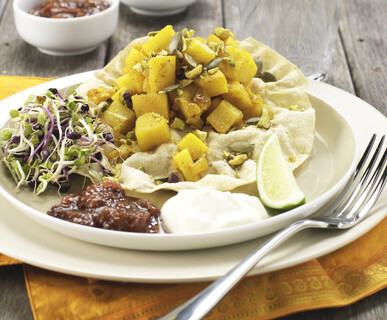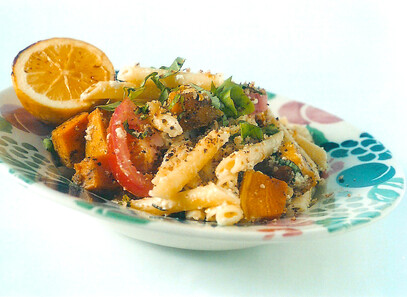Savour the spud! The ever-popular potato was first cultivated in South America between 5000 and 8000 years ago. However, it took until the 16th century for the pleasures of the potato to be introduced to Europe where they quickly — and understandably — replaced turnips as the most widely used veg.
Pumpkins and squashes were among the earliest foods planted by American Indians and, prior to the arrival of Columbus, this New World staple was unknown in Europe. A French explorer, Jacques Cartier reported that he had found gros melons, which was translated into English not as ‘big melons’ but as ‘pomions’ — pumpkins. While the translation of the name may have been faulty there can be no doubt about the pumpkin’s acceptance as a culinary staple.
The parsnip is native to Eurasia. It was cultivated by the Romans who sautéed them in oil with onions, cumin and coriander. Parsnips were also used as a sweetener before sugar cane. It’s considered a winter vegetable because its flavour is not fully developed until the roots have been exposed to near-freezing temperatures for two to four weeks in autumn and early winter. The starch in the parsnip root changes into sugar, resulting in a unique strong, sweet, taste.
SKORDALIA
Garlic and potato dip.
500g potatoes, peeled
4 large cloves garlic
1/2 teaspoon salt
3/4 cup blanched almonds, finely chopped
3 tablespoons each: lemon juice, white wine vinegar, extra virgin olive oil
1/2 teaspoon sugar
freshly ground black pepper and chopped parsley to taste
Boil the potatoes, until cooked. Drain well and let stand for 5 minutes to dry out.
Crush the garlic and salt together with the blade of a strong knife. Place in a food processor with the almonds and potatoes. Pulse until the mixture is just smooth — do not over-process. Combine the lemon juice, vinegar, olive oil, sugar and salt. With the motor running, add the lemon juice mixture. Scrape down the sides occasionally. Season and add the parsley. Store in a covered container in the refrigerator.
Great served as a dip with crisp vegetables or as a side with roasted or grilled chicken or fish. Serve drizzled with extra olive oil, if preferred. Makes about 2 cups.
PARSNIP CURRY
1 onion, chopped
1 tablespoon canola oil
1/2 teaspoon ground cumin,
1 teaspoon ground turmeric
pinch each: cayenne pepper, chilli powder, salt
1 cup vegetable stock or water
600g parsnips, peeled and cubed
Extras: 4 pappadums
1/4 cup each: chopped pistachio nuts, pumpkin seeds
1/2-3/4 cup each: yoghurt, chutney
1 cup bean sprouts
Sauté the onion in the oil in a saucepan for 6-8 minutes, until golden. Add the spices and cook, stirring, for 30 seconds.
Add the stock or water and parsnips. Bring to the boil, cover and simmer on low heat for 20-30 minutes, until the parsnips are tender but not mushy.
Meanwhile, heat the pappadums in the microwave for about 30 seconds each. Serve the curry topped with the nuts and seeds and accompanied by the other extras. Serves 3-4.
PENNE WITH ROAST PUMPKIN & DUKKAH
For a moreish taste, try the versatile dukkah recipe on my website www.janbilton.co.nz
400g pumpkin, peeled and seeded
spray olive oil
salt and pepper to taste
2 tablespoons each: dukkah, extra virgin olive oil
300-400g dried penne pasta
200g ricotta
1 large tomato, cut in wedges
1/4 cup basil leaves, sliced
Preheat the oven to 180°C.
Cut the pumpkin in 2.5cm cubes. Spray with a little oil then toss with the salt, pepper and dukkah.
Pour the extra virgin olive oil into a large roasting pan and add the pumpkin. Roast for about 25 minutes or until cooked.
Meanwhile, cook the penne in a large saucepan, until just tender. Drain well. Add the pumpkin, adding more olive oil if necessary. Warm through on medium heat. Add the ricotta, tomato and basil. Toss carefully. Lightly pile into bowls to serve. Can be sprinkled with extra dukkah if desired. Serves 4.


